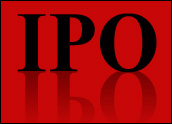
To anyone who runs a small company, raising capital might seem like an overwhelming task. Venture capital companies usually want a big piece of your pie if they are to invest in your business.
Often, this means that you have to give up control of the business you worked so hard to start. Financial institutions also are not particularly friendly to the small-cap company. In many instances, even though they don’t necessarily want an ownership interest, they do want adequate collateral. This often takes the form of a second mortgage on your residence.
The question is whether there other options for raising capital.
The IPO Alternative
An alternative you should consider is an initial public offering (IPO). How will an IPO solve your money problems? Actually, it is generally far easier for a publicly-traded company to obtain capital than a private company.
Once you go public, a universe of lenders and investors opens up to you. Fortunately, you don’t have to mortgage your home to obtain this type of financing. Most capital providers will take stock in your company at some sort of a discount to market and will sell that stock at an appropriate time to get their investment back and make a tidy profit.
So the publicly-held vehicle does open up many opportunities to you in your quest for working capital or long-term capital.
Why is this so? The fact is that the stock of a public company is usually quite liquid. It can be used as “scrip” to secure funds, acquire other businesses, provide liquidity to the estates of the owners, provide incentives to top employees in order to encourage them to stay on, and so forth. In other words, the scrip becomes the equivalent of money.
The Process
You might think it is extremely difficult to go public through the IPO process, and, in many cases, it is. But it doesn’t have to be. Most IPOs of the last few years involved larger companies that had a proven track record.
The reason for the dearth of IPOs of late has been the well-publicized dot-com boom and bust. At one point, before the bust, many companies went public with very little planning, not to mention very little — if any — income. Some of them had meager business plans, some of which were written on the backs of placemats while the aspirants were dining and dreaming of going public.
Many of these poorly-prepared companies actually made it through a full IPO. Unfortunately, they didn’t last very long. They went bust within a very short time after they burned through the money that they raised in a public offering.
Does this mean that the opportunity of going public is now closed to you because your company is relatively small? Not at all.
Find a firm that specializes in bringing small-cap companies public through a fully compliant and SEC-approved method. For example, a company wishing to go public can issue a dividend consisting of a small percentage of its stock (10 percent or less) to an already-public company.
The public company then spins off the dividend to its shareholders through its dividend distribution program. This process of distributing the stock of the company wanting to go public to the shareholders of the already-public company is what creates the requisite float in order to qualify for full IPO status.
IPO in Every Respect
Put another way, this is an IPO in every respect except that it’s not underwritten.
When an IPO is underwritten, analysts do a lengthy and detailed study of your company to assess its market potential. This type of IPO is usually underwritten by large investment banking firms that have first vetted your company before they go through the lengthy and expensive underwriting process.
But, underwritten IPOs are available to so few companies today because of current market conditions. The process described above opens the exclusive IPO field to smaller companies that could not otherwise become public through the underwriting process.
Reverse Merger
A nontraditional way by which a company becomes public is through a so-called reverse-merger route. A reverse merger occurs when a private company merges with a public shell.
A public shell is a company that was once public and operating, but has suspended its operations for some reason — bankruptcy or some other type of closure.
The problem with a reverse merger is that one can never be sure if there are any hidden liabilities in the formerly public company. Also, the SEC has recently (June 8, 2004) suspended trading on certain public companies that were created through a reverse merger. This action might prove to be the death knell of reverse mergers.
Find a company dedicated to helping the small-cap company that would otherwise have great difficulty in trying to go public. I realize that many small companies have a great need for capital and that they are usually shut out of the capital markets because of a variety of reasons that are beyond their control.
The IPO process need not be a difficult and harrowing one. It can be a good experience that will bring great opportunities for you and your company.
Theodore F. di Stefano is a managing partner at Capital Source Partners and can be contacted at [email protected].




















































I AM the author of the above article and would like some feedback that I can include in future articles. Please feel free to contact me. The link is in my article. Thanks, Ted di Stefano
There has been increased interest in direct public offerings (DPO) What are your thoughts on this aspect of going public vs an IPO. I AM a mid size company, for profit in the healthcare service industry with the usual minimal hard asset situation and a large employee overhead. Strike one. In New York State, Strike two. Yet, with about 1 -1.5 mil in capital we can take this to the next level and I AM perked by the DPO concept. Perhaps you have already written about this? Many thanks in advance.
Rick Thompson – President, Flower City Health Care
Hi, Rick: Thanks so much for your comments. Sorry it took so long to get back to you. Please contact me so that we can discuss further. My contact number is on my website: http://www.CapitalSourcePartners.com or call me at 401.783.5079. Thanks, Ted